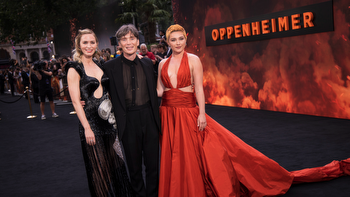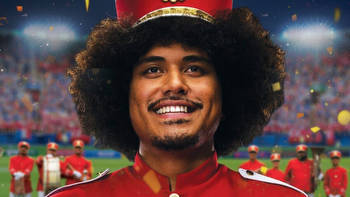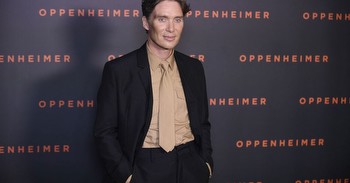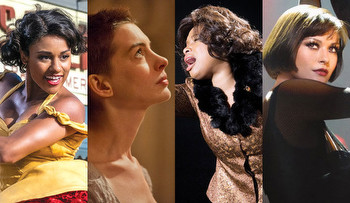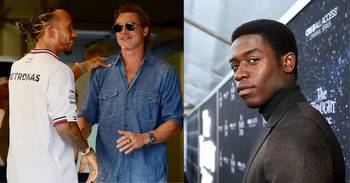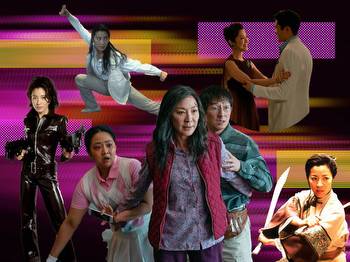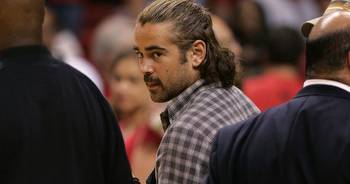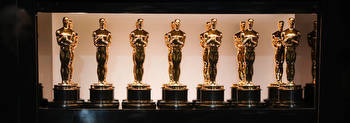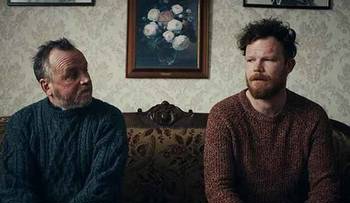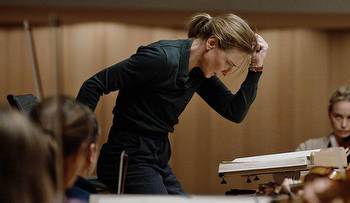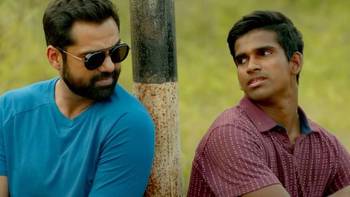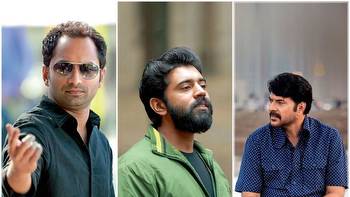Winning Combination: A Short History of Directing Duos at the Oscars
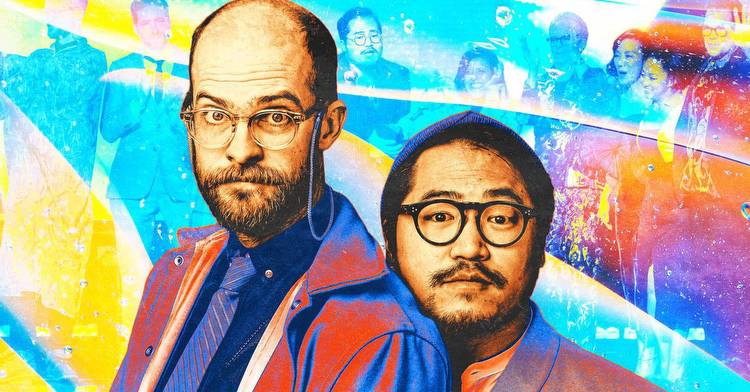
Film is a collaborative art, but it’s one with some pretty clearly defined roles. Those roles can get a little blurry sometimes but, in theory at least, it’s the director who’s in charge, and thus the person to get the directing credit. And directing credits tend to err on the side of simplicity: In the United States, the Directors Guild of America is reluctant to assign multiple credits, even in recent cases likeSolo andBohemian Rhapsody, where a substantial portion of what makes it to the screen is the work of filmmakers other than the credited director. Most films end up bearing one director’s name in the credits and, consequently, so do most films nominated for Academy Awards.
There are notable exceptions, however. For an example, look no further than this year’s Oscars, which include nominations for Daniel Kwan and Daniel Scheinert (collectively known as “Daniels”), the current favorites to win the Best Director trophy (or trophies) for Everything Everywhere All at Once. Established directing teams like Daniels (or the Wachowskis or, to return to Solo, Phil Lord and Christopher Miller) regularly share directing credits. In other cases, extraordinary circumstances—like Michael Apted finishing the 2012 film Chasing Mavericks for an ailing Curtis Hanson—lead to credits with multiple names under the words “Directed by.”
Given their relative rarity, films with shared credits have fared pretty well in the Best Director category. Though only four directing duos have been nominated, two have won. (Daniels would make it three.) But the shared nominations (and a couple of solo nominations with asterisks) reflect different sorts of collaborative processes and different possible routes that might end with two directors standing side-by-side onstage on Oscar night.
The first team to share the directing prize did so under the most dramatic conditions. From the time it reached Broadway in 1957, West Side Story had been a tremendous success, and—even with the involvement of, for starters, Leonard Bernstein, Stephen Sondheim, and Arthur Laurents—that would not have happened without Jerome Robbins, who conceived the play and served as its choreographer and director. In adapting the film, producer Walter Mirisch determined Robbins’s involvement would be crucial.
Robbins’s inexperience with film, however, led Mirisch to bring in Robert Wise as a codirector. A prolific veteran who already had films like The Day the Earth Stood Still and Run Silent, Run Deep behind him and The Haunting, The Sound of Music, and many more ahead of him, Wise’s experience, by Mirisch’s calculations, would complement Robbins’s talents. “We tried to impress upon them that we wanted the best strengths of both of them,” Mirisch recalled in the 2003 documentary West Side Memories.
It didn’t quite work out that way. Perpetually unsatisfied with his work, Robbins shot, in Rita Moreno’s words, “take after take after take,” prompting the film’s financiers to demand his removal with about 40 percent of the film left to shoot. Robbins exited, but he also left behind a cast with whom he’d rehearsed the remaining dance numbers, and most of his assistants. He also didn’t entirely depart the production, helping Wise with the editing after the filming had wrapped.
The film became a critical and box office hit in 1961, and whatever sore feelings remained were not in evidence the following April, when West Side Story won 10 of the 11 Oscar categories in which it was nominated. Robbins was even given an honorary award for, in the Academy’s words, “his brilliant achievements in the art of choreography on film.” When Rosalind Russell announced Wise and Robbins as the first directors to share the directing prize—beating out Federico Fellini, J. Lee Thompson, Robert Rossen, and Stanley Kramer—both men were all smiles. Robbins thanked the film’s producers, and the original producers of the play, and gracefully left the stage. (Robbins, however, never directed another feature.)
Would Warren Beatty and Buck Henry have been as jovial had they won for the 1978 comedy Heaven Can Wait? Maybe. But the charming, seemingly effortless comedy had a tumultuous production that predated the arrival of Henry, who showed up first to work on a script penned by Beatty and Elaine May before pivoting to codirector. It’s a process Henry and star Dyan Cannon were still coy about 40 years later at a screening of the film hosted by TCM’s Ben Mankiewicz. Henry alluded to arguments with Beatty and, after Mankiewicz rattled off a long list of supposed silent treatments between cast and crew members on the set, Cannon replied, “All that stuff is such garbage,” before adding, “Well, not all of it. There’s a few quotes in there that are right-on.”
A respected actor and writer with a cutting comic wit, Henry, like Beatty, made his directorial debut with the film. But Henry had an understanding that he would be second in command. Beatty originated the project, a remake of the 1941 supernatural comedy Here Comes Mr. Jordan, in which Robert Montgomeryplays a boxer (a football player in Beatty’s version) who’s sent back to Earth in another man’s body after dying before his scheduled expiration date. And while Henry had enjoyed great success as, among other accomplishments, the cowriter of The Graduate and the cocreator of Get Smart, Beatty was the more powerful of the two and had been asserting that power on the set of other productions in the years leading up to his directing debut. “Warren gets me real cheap all the way around, because it was my big chance,” Henry is quoted as saying in Peter Biskind’s 2010 biography Star: How Warren Beatty Seduced America. “We both knew that he had final say, that was a given.”
By Henry’s recollection, their collaboration was defined by arguments about everything from camera placement to Beatty’s habit of shooting dozens of takes to what color of pants Beatty should wear in a scene to Beatty’s suggestion that they “get rid of the character actors mid-shoot.” “I think he was testing me,” Henry recalled, “but I don’t know what the test was for. Maybe how much power he had over everyone, which he liked to do.” Still, Henry stuck it out to the end, in part because he also had an acting role in the film. Heaven Can Wait was given a warm reception when it hit theaters in summer of 1978 and received nine Academy Award nominations. It won only one, however, for art direction. Wise and Robbins remained the only directors to win together.
That would remain true for almost three more decades. During that time, the idea of shared directing credit became a sticky one for the Oscars. In 2004, Fernando Meirelles received a nomination in the directing category for City of God, a film for which Kátia Lund is credited as codirector. In the opening credits, Lund’s name appears second-to-last, credited as “co-direção,” followed immediately by Meirelles, who is listed as the outright director. For the Academy, which does not recognize the unusual credit of “codirector” (only films with two or more directors given the same title), it would be a distinction with a difference. For Lund, it would inspire mixed feelings.
The project originated with Meirelles, but he felt he couldn’t make it without the help of someone with experience in Rio’s favelas. So he sought out Lund, who became deeply involved in the project. “I worked on the script from the fourth to the 12th draft,” she told The Guardian at the time. “I supervised the crew. I know I was there working with Fernando to construct the vision and style of this film. If I was not directing, what was I doing?” The Academy’s rules would put Lund in an awkward spot. “What I have decided is that this is Brazil going to the World Cup and I’m not going to be the one who wrecks the party,” she told the paper.
A few years later, Loveleen Tandan’s work as “Co-Director (India)” on Slumdog Millionaire would briefly raise the issue again, though Tandan went to great pains to stress she considered Danny Boyle the film’s director. By that point a different team had won the Best Director prize: Joel and Ethan Coen, for the 2007 film No Country for Old Men. Their collaboration was not, unlike the pairings of Robbins and Wise and Beatty and Henry, formed for a single film, but the latest project in a lifelong partnership. That partnership’s history, however, does reveal how slippery movie credits can be. Though by all accounts the Coens worked in close collaboration at every level since their 1984 debut, Blood Simple, the pair would not share credit as directors until Ladykillers in 2004. In previous films, Joel took the directing credit, Ethan was credited as the producer, and the two shared the screenwriting credit. (Longtime editor “Roderick Jaynes” is also a collaborative pseudonym.) Sometimes movie credits don’t tell the whole story.
A Daniels win this year would seem to suggest that directing duos have an advantage at the Oscars, winning three times out of a possible four. Still, other talented directing teams, like the Wachowskis, have never received Oscar recognition. Neither have the partnerships of Joe and Anthony Russo and the Dardenne brothers. (To say that the style of these teams differs vastly is putting it lightly.) Peter Farrelly had his best luck at the Oscars with his first film made without his brother Bobby, the Best Picture–winning Green Book (though Farrelly’s direction did not receive one of the film’s four nominations).
Some of those names also serve as a reminder that such partnerships don’t always last; the Coens, Wachowkis, and Farrellys have all begun to work apart from one another in recent years. Reunions, of course, always remain possible, as do future awards and nominations. In practice, two directors aren’t always better than one, but when it comes to the Academy Awards, Oscar history suggests a pair is a winning combination.
Keith Phipps is a writer and editor specializing in film and TV. Formerly: Uproxx, The Dissolve, and The A.V. Club.

